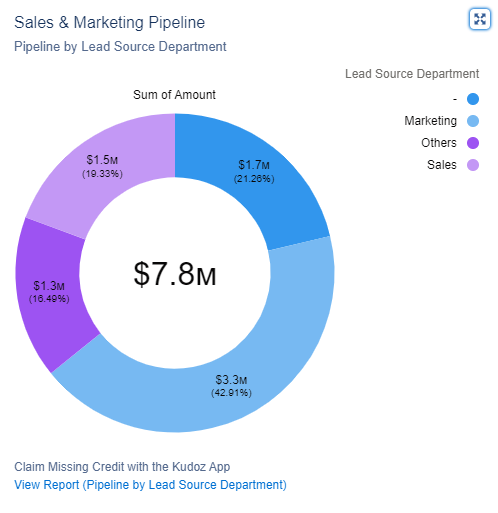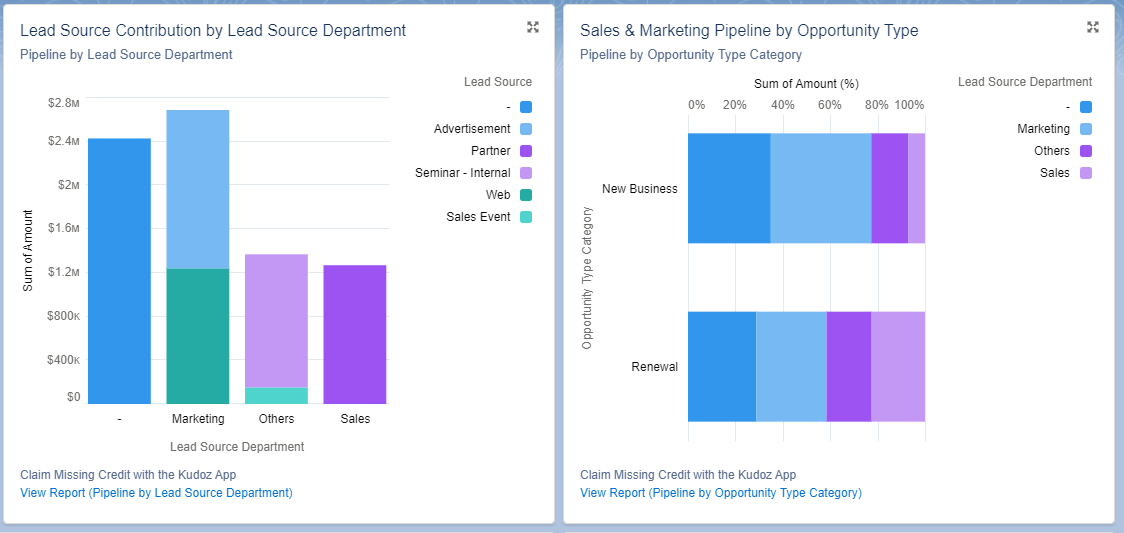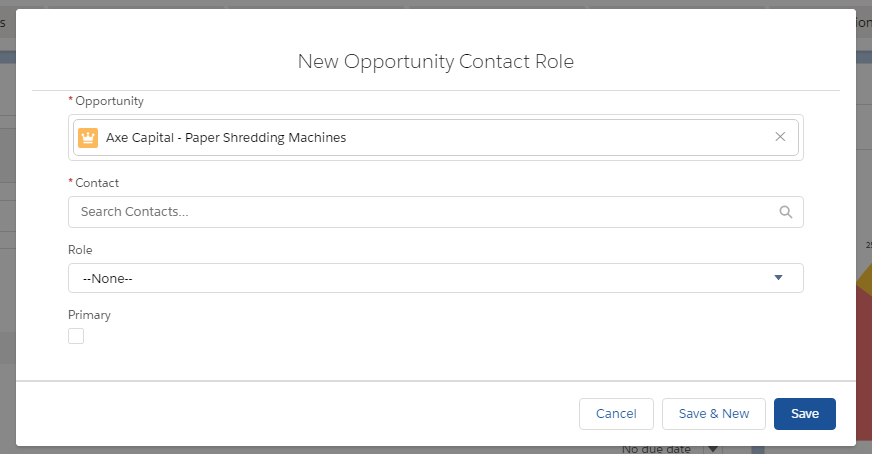Three ways to maximize your marketing potential in Salesforce
Jan 11, 2022It's easy to get bogged down in the day-to-day of B2B marketing.
You're busy, you have a lot on your plate, and it feels like there has never been more work to do. But B2B marketers are also responsible for reporting on their success - how they’re generating leads through various channels, what percentage of those leads converted into deals, etc. Reporting B2B marketing success can be tricky if you don't know where to start or what data points matter most.
Here are three ways that will help maximize your B2B marketing potential.
- Simplify reporting for Marketing
- Never have an unknown lead source again
- Build a buying group to better personalize the customer buying experience
Simplify reporting for Marketing
When it comes to B2B marketing reporting, it's easy to feel overwhelmed. After all, there's a lot of data to track - from website visits and leads generated to social media activity and email open rates. Trying to make sense of it all and compile it into a cohesive report can seem like an impossible task.
But it doesn't have to be. There are a few ways to simplify B2B marketing reporting that will make the process a lot less daunting.
The first way is to focus on the most critical data points. What are the key metrics you need to track to measure your success? Which ones are most indicative of whether your B2B marketing efforts are working or not?
Is Marketing Working?
A simplified way for your C-Level executives to know that Marketing is working is by having a readily accessible Salesforce Report that shows Sales & Marketing pipeline performance all in one visual.
This will allow your executives to see that marketing is working and help them make better decisions with accurate data.

To get a view of your Sales & Marketing Pipeline Performance, you'll want to map your Lead Sources to either Sales or Marketing. Mapping your field values enables you to roll-up granular lead source values into Executive level reporting.
A mapping table as seen below helps manage lead source attribution into Sales & Marketing.

B2B Marketers such as Marketing Directors, Demand Generation Marketing Managers, Marketing Operation Analysts can further slice into the Marketing programs to report on the success of the marketing initiatives that are meaningful to your business.

"Everybody benefits from Clean Data."
When you have accurate and complete data, your sales leaders can improve their ability to forecast revenue accurately, and marketing can invest in efficient marketing programs that result in Closed Won opportunities.
Senior Director of Marketing at Salesforce, Keara Cho & Tracy Foster, mentioned two data quality diagnostics for Marketers in the "3 Pillars to Create High-Impact Campaigns on a Limited Budget" webinar.
- Never having a missing Campaign Value
- Using the Opportunity Contact Role feature to build a Buying Group
Having accurate and valuable data allows Sales and marketing to work hand in hand to close an opportunity.
Never have an unknown lead source again.
One way to make your B2B marketing data more accurate is to ensure that lead sources are populated in Salesforce. This will allow you to identify the lead source for each B2B Lead, Contact, and Opportunity to ensure that B2B marketing attribution is accurate and well documented.
Ensuring Maximum Potential
You can require that a Lead Source be mandatory when an Opportunity is created, or you can create a Salesforce report to detect Opportunities without a valid lead source and resolve them when they arise.
There are pros and cons to both approaches.
- Requiring a field ensures data completeness; however, it is known to be a friction point to Salespeople's adoption of Salesforce.
- Creating a monthly process to validate the accuracy of your data is ideal before month-end reporting; however, it requires discipline and involves investigative work.
To ensure maximum potential, create a report that you can review before month-end reporting to resolve any orphan opportunities that don't have a lead source.

There are many methodologies you can apply to associate a lead source to an opportunity, but to simplify it for Marketers, here's a generally acceptable way that you can start.
Review the Contacts tied to the Account of the Opportunity, and determine which contact best led to the opportunity creation. A straightforward approach is to narrow your investigation into contacts created within a reasonable time period before the created date. If you have a longer sales cycle, such as nine months +, limit the eligible contacts to those that were created six months prior to the Opportunity created date.
Here's an example of eligible contacts with a valid lead source within an Account that you can associate with the orphan Opportunity.

Once you associate a lead source to an opportunity, Sales & Marketing will have a more accurate picture of the Revenue pipeline performance.
Build a buying group to better personalize the customer buying experience
When you're building a buying group, it's essential to personalize the marketing experience for your customers. You can do this by creating a buying group that is based on your customers' roles within their organization. This will help you to target your marketing efforts more accurately.
According to the Harvard Business Review, the number of people involved in B2B solutions purchases has climbed from an average of 5.4 two years ago to 6.8 today, and these stakeholders come from a lengthening roster of roles, functions, and geographies. This includes a decision-maker, influencer, and budget holder.
Now, you can assign contacts to an opportunity using the opportunity contact role feature in Salesforce to designate the buying group role within the organization. This will help your marketing efforts be more productive because you will target the right customers with the right messages.

A Better Way
As a B2B marketer, you are constantly fighting to show the impact of your efforts. You might be doing great things, but it's hard for people in charge to see that because they're not looking at all the data points.
While you can have your Salesforce Admin & Marketing Operations team implement automated or manage manual processes, it’s important for transparency and adoption to keep everything within Salesforce.
I took 6+ years of B2B Marketing Analytics experience at BusinessOnline, working with Fortune 500 companies, and we developed a Salesforce App for B2B Marketers to enjoy. With Kudoz the Opportunity Analyzer, we'll give you an Executive level dashboard with Sales & Marketing performance within Salesforce derived from our ability to ensure that every Opportunity has a lead source and buying group.
Check out the Kudoz the Opportunity Analyzer App on the AppExchange, and connect with me on the Trailblazer Community.
Stay connected with news and updates!
Join our mailing list to receive the latest news and updates from our team.
Don't worry, your information will not be shared.




